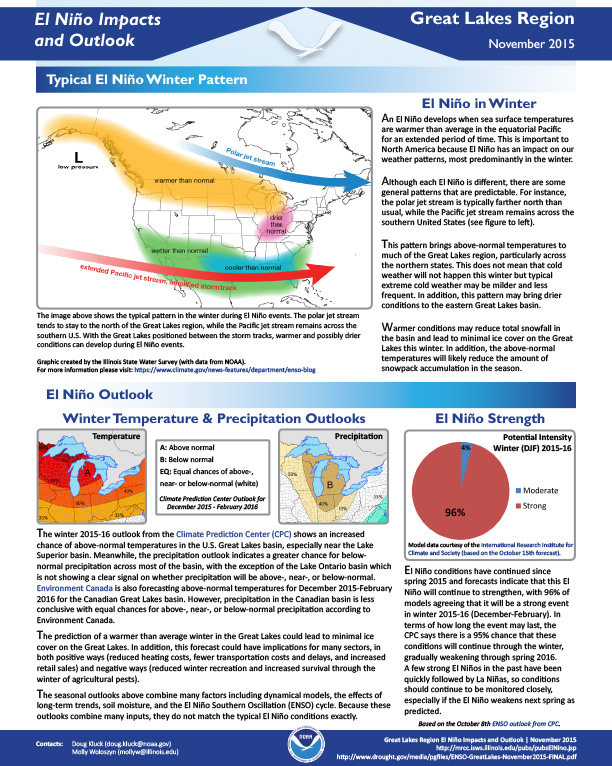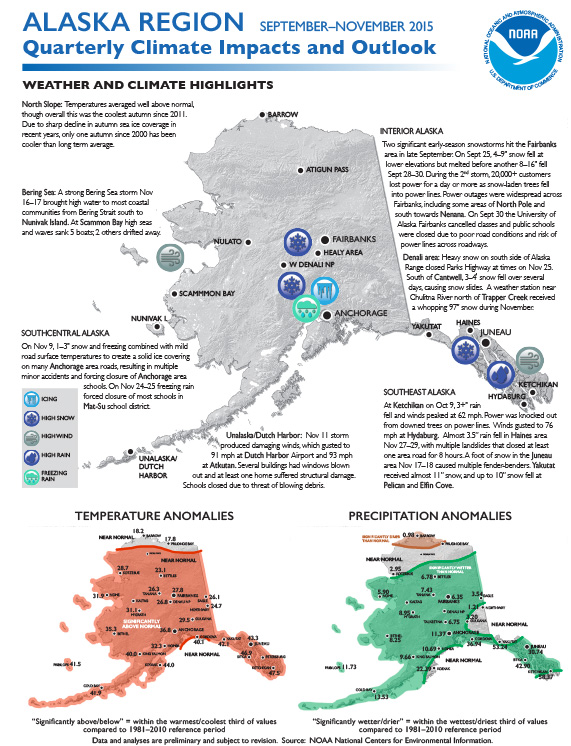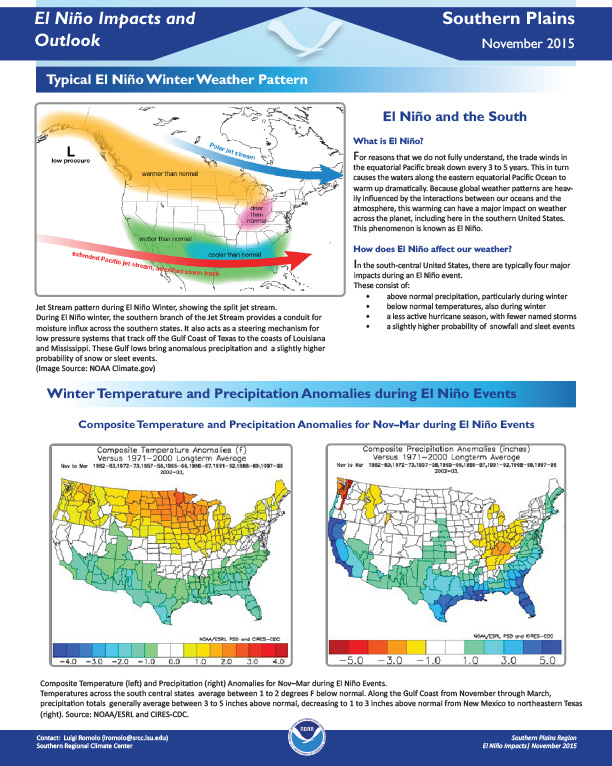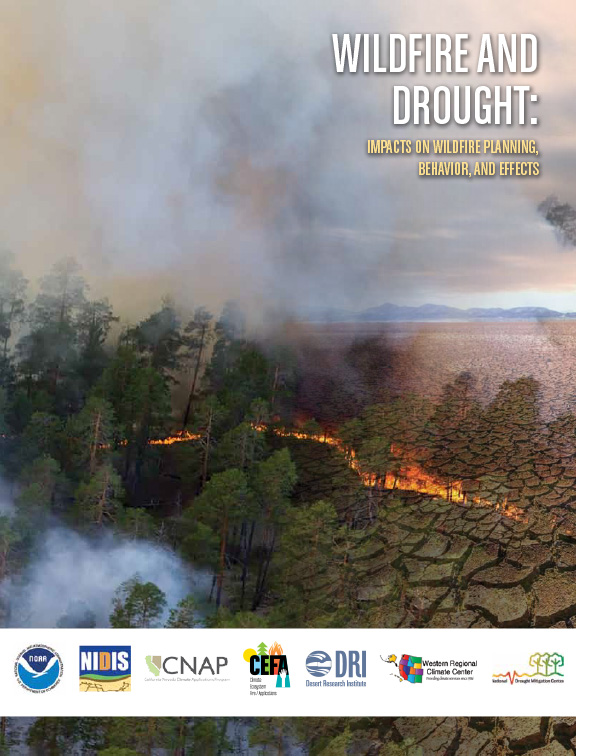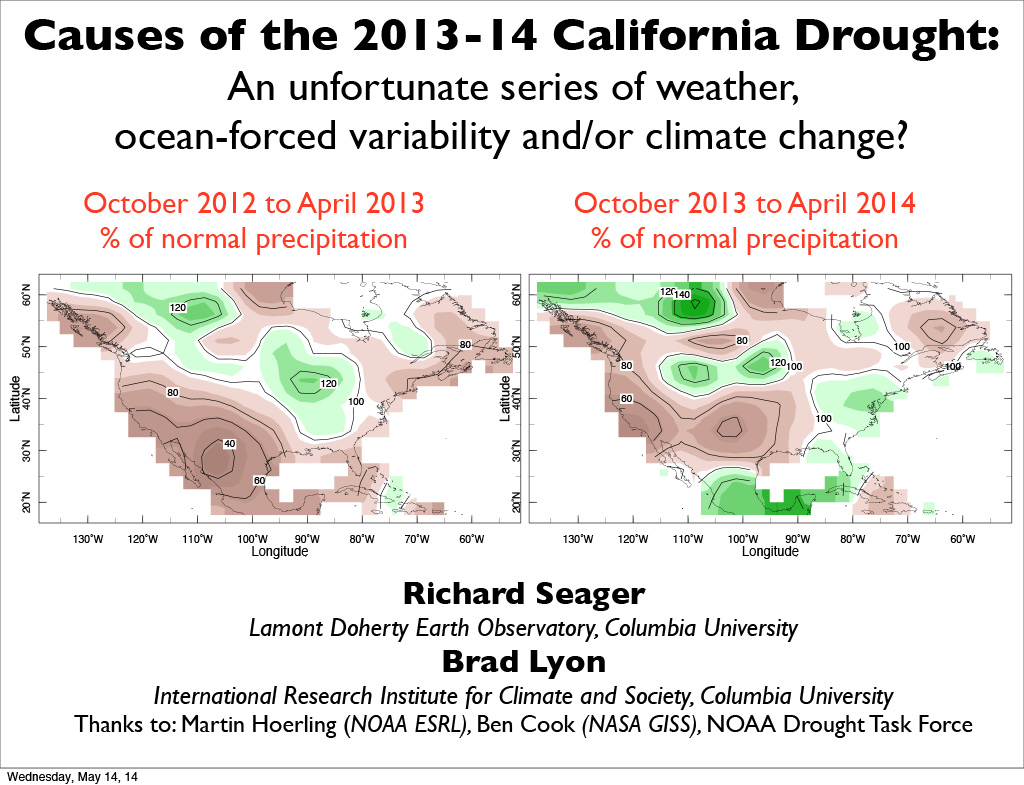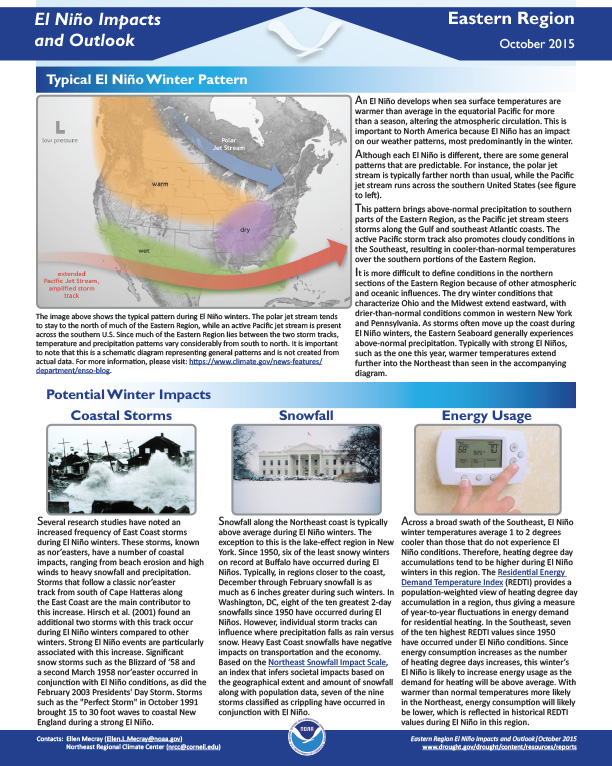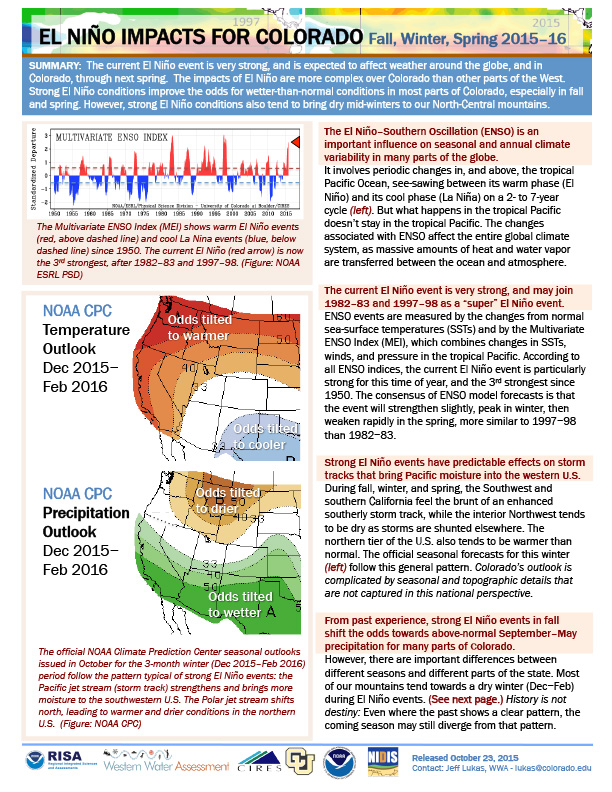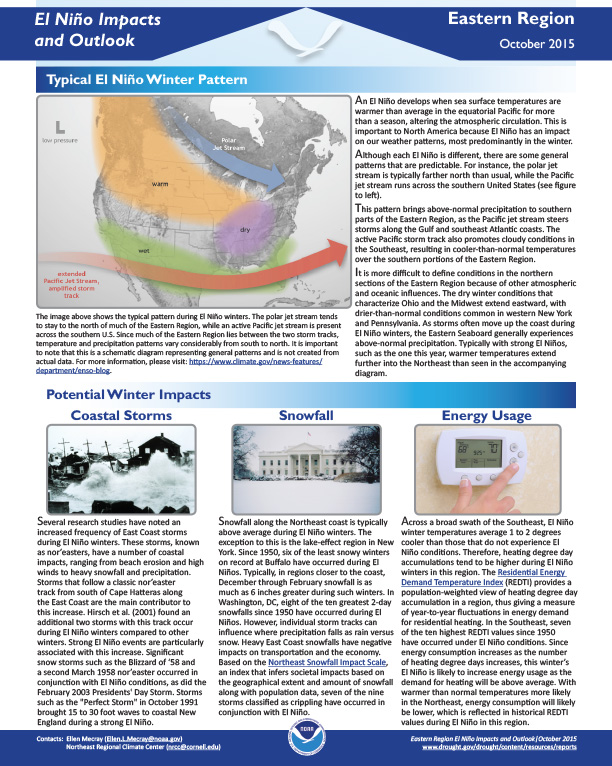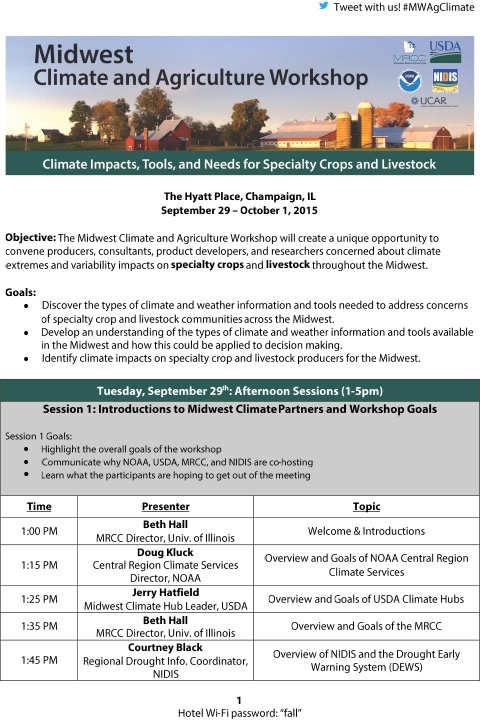Typical El Niño winter weather pattern, temperature and precipitation outlooks, potential impacts, past El Niños.
For Alaska, September-November 2015: Weather and climate highlights, temperature and precipitation anomalies, temperature rankings, outlook for January-March 2016.
Typical El Niño winter weather pattern, temperature and precipitation anomalies during El Niño events, climate outlook for Dec-Feb 2016, effects on hurricane season.
The National Integrated Drought Information System, in partnership with NOAA’s Western Regional Climate Center (WRCC), the California Nevada Applications Program (CNAP, a NOAA Regional Integrated Science Applications team), the Desert Research Institute (DRI), and the National Drought Mitigation Center (NDMC), hosted the “Integrating Drought Science and Information into Wildfire Management Workshop” in Boise, Idaho on 21-22 October 2015. Seventeen federal, state, NGO, and academic entities attended the workshop.
Full Title: Causes of the 2013-2014 California Drought: An unfortunate series of weather, ocean-forced variability and/or climate change. Presented at the California Drought Forum May 15-16, 2014.
Typical El Niño winter weather pattern, potential impacts, winter temperature and precipitation outlook, past El Niños.
Dry Times Volume 5 Issue 2
Prior to becoming a bi-weekly email newsletter, “Dry Times,” the NIDIS newsletter, appeared twice a year in the spring and fall.
The current El Niño event is very strong, and is expected to affect weather around the globe, and in Colorado, through next spring. The impacts of El Niño are more complex over Colorado than other parts of the West. Strong El Niño conditions improve the odds for wetter-than-normal conditions in most parts of Colorado, especially in fall and spring. However, strong El Niño conditions also tend to bring dry mid-winters to our North-Central mountains.
Shows past El Niño conditions, effects on snowpack and runoff.
El Nino Impacts and Outlook – Eastern Region, October 2015.
Meeting agenda


